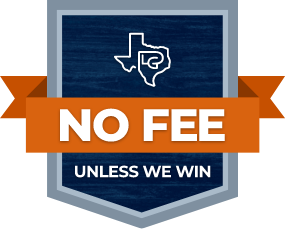Our roads don’t just seem unsafe – they are unsafe! According to figures from the Texas Department of Transportation, a car crash happens in our state every 66 seconds. From the guy trying to beat the red light to the girl applying makeup while texting and driving, dangers are all around us. If you are unlucky enough to encounter a distracted, drunk or downright dangerous driver, you’ll be faced with repairs, injuries and mounds of paperwork after your crash. One of the many pieces of paper you’ll have to deal with could be the Driver’s Crash Report, also called the Texas Blue Form (CR-2); learning more about this document and how it could impact your case can keep you from making a costly error.
What is a Driver’s Crash Report (CR-2)?
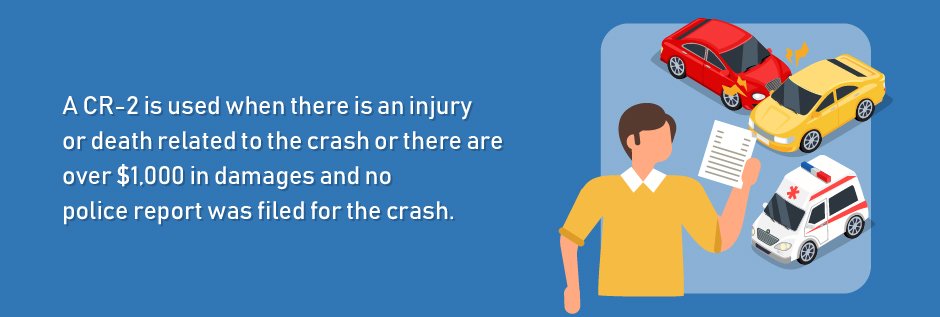
A CR-2 report is used if for some reason the police don’t show up and complete an official (CR-3) police report. The report is designed to explain the details of the accident to the Texas Department of Transportation. We do not encourage you to complete a CR-2 unless you absolutely must (more details on this below). Completing this form unnecessarily could damage your case and decrease your chances of getting a fair settlement. You may have no choice – Texas is famous for rather rigid adherence to laws – but only complete a CR-2 when you have no other option, and make sure an attorney reviews it before you file.
Why No Police Report?

Ideally, police officers would show up instantly after a crash, fully document it and clearly show how badly the other person messed up your car and your life. In the real world, though, the police have other obligations and may not be able to get to your crash scene at all. In some cases, they simply don’t want to take the time to complete a form for what they consider to be a “minor” crash. Even a wreck that appears to be minor can result in injuries that can impact your ability to earn a living, enjoy your life and even perform basic daily tasks. If you’re left holding the bag and the police officer declines to make a report, you’ll need to file a CR-2.
What is the CR-2 / Blue Form Used For?
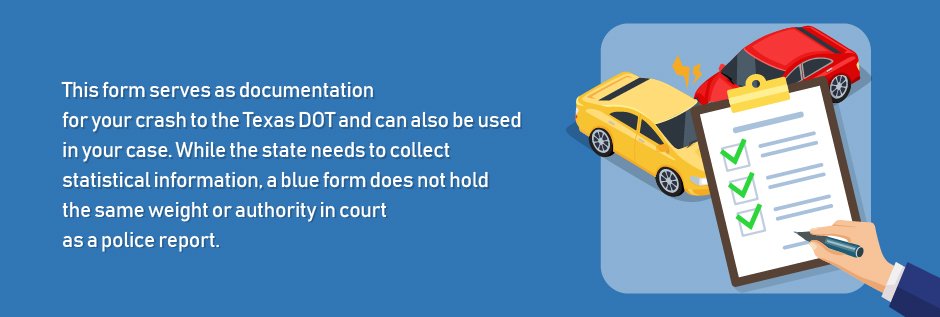
This form serves as documentation of your crash for the Texas DOT and can also be used in your case. While the state needs to collect statistical information, a blue form does not hold the same weight or authority in court as a police report. A police report is often seen as more of an objective statement of what happened; a report generated by one of the parties involved in the wreck, even the victim, carries less weight.
This form may not be terribly helpful; after all, the person who hit you is unlikely to make the following statement, even if it is the truth:
“I stopped by the bar for a few beers, then headed home. While I was in the middle of texting and finishing up my order of wings to go, I rammed into a guy on his way home for work. Totally my bad.”
When Are You Required To Fill Out A Blue Form?
Under certain circumstances, Texas law requires that you fill out a Blue Form. If an officer was not available or declined to create a report, you must fill out a blue form if:
- An injury or death occurred as a result of the accident
- Or, there appears to be property damage at an estimated value of $1,000 or more
Again, it can’t be stressed enough that your form should be reviewed by an attorney before submission if you have to file a Blue Form.
Who Should Complete A Driver’s Crash Report (Form CR-2)?
The crash report should be completed by the driver involved in the crash. However, another individual is allowed to complete the report on the driver’s behalf if the driver is unable to complete the report. If an individual other than the driver completes the report, an explanation should be given as to why the driver was unable to complete the form.
How To Fill Out A Texas Blue Form
If you have to fill out a Texas Blue Form, the form you fill out will depend on when your accident occurred. Per Senate Bill 312, CR-2 forms are no longer retained by the Texas Department of Transportation and the form itself has been slightly updated. Crashes that occured prior to September 1st, 2017 will require the old Blue Form, while crashes that have occured after September 1st, 2017 can be documented with the older form.
The forms do have distinguishable differences. The older form pictured below is blue throughout.
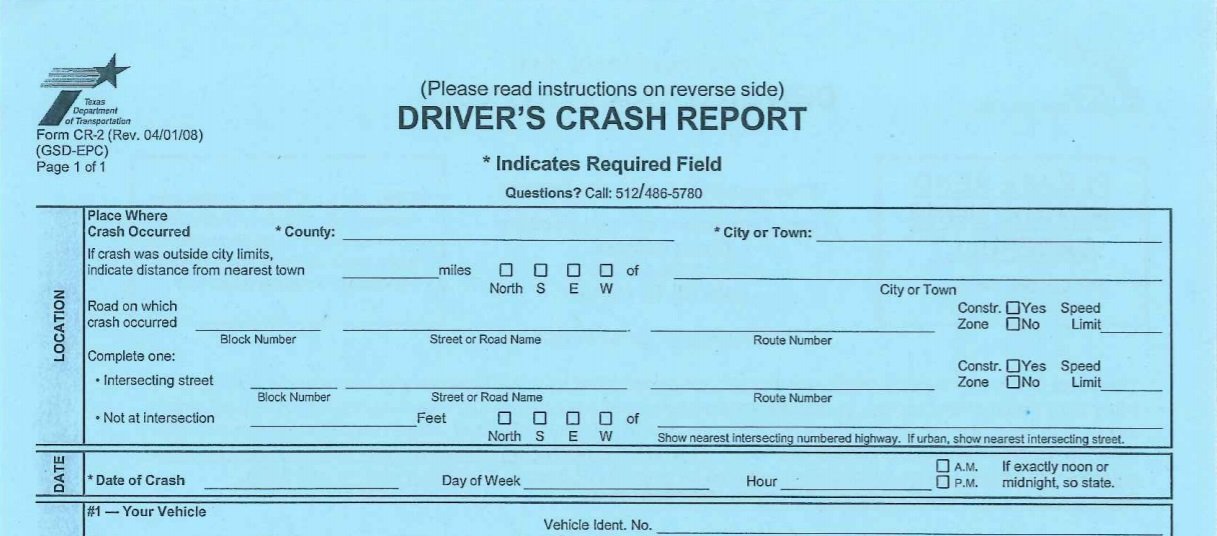
The newer blue form is a white document with a blue header.
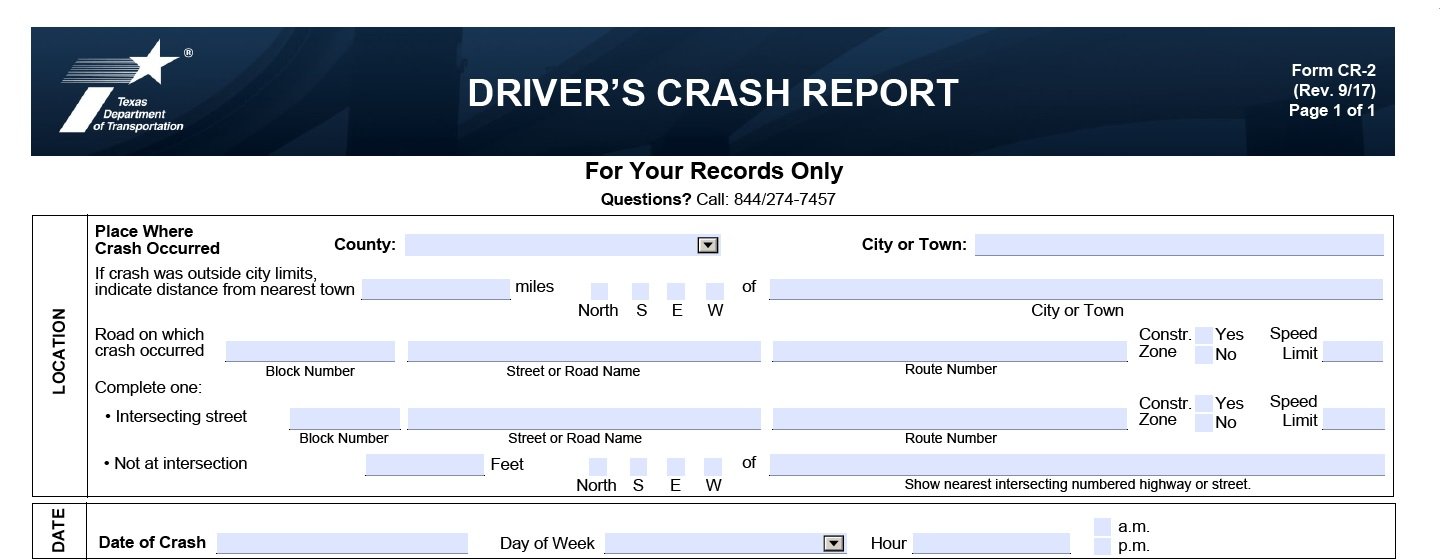
If your crash occurred prior to September 1st, 2017, you can mail your completed form to the Texas Department of Transportation.
Texas Department of Transportation
Crash Records
PO Box 149349
Austin, TX 78714
Blue Forms completed for crashes occurring after September 1st, 2017 should be retained for your records.
What Information Is Included On The CR-2?
Completing the required information at least gets some details on record. Information requested on a crash report includes:
- Date of the crash (including the time if known)
- Where the wreck happened
- Which cars and people were involved (your vehicle would be listed first)
- What cars were damaged and what visible damage is showing
- Injuries sustained on the scene
- The story, or narrative of what happened, in a driver’s statement (do not send photographs)
- Your signature attesting that the information on the form is correct
A Crash Report Could Hurt your Case
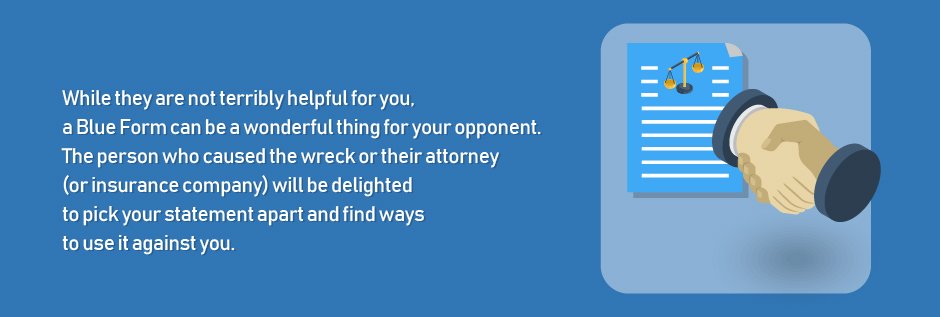
While they are not terribly helpful for you, a Blue Form can be a wonderful thing for your opponent. The person who caused the wreck or their attorney (or insurance company) will be delighted to pick your statement apart and find ways to use it against you. Providing accurate information is essential, but supplying more than the form asks for is looking for trouble.
For instance, if you were involved in an accident coming from Chicotsky’s liquor store, you may write that in the report. You might think it’s important to be as detailed as possible, but the other driver’s insurance company may try to claim that you were under the influence of alcohol based on your written statement that you were leaving the liquor store. The insurance company’s defense counsel will try their best to spin your written statement into proof that you were intoxicated. In this case, including additional information such as the store you were driving from does not benefit your claim and harms it instead.
Offer only the facts and nothing else – and make sure an attorney reviews your form before you hand it in to make sure your rights and interests are protected. In addition, especially if filed unnecessarily, a CR-2 could hinder future attempts to obtain or renew auto insurance at reasonable rates.
Contact Patterson Law Group For A Free Case Review
Contact us to talk about your case – before you file a crash report form that could jeopardize your potential settlement or rights. Our goal is to ensure you are treated fairly and with respect by the system, because when you work with Patterson Law Group protecting your rights is our highest priority. Our clients come first and we strive to earn them the results they deserve.
Our complementary consultation is the first step towards a fair recovery. Schedule your complementary consultation today.


